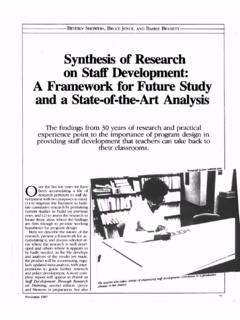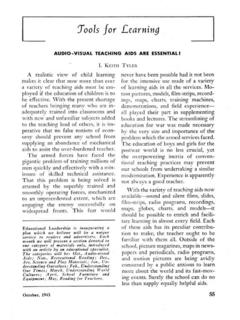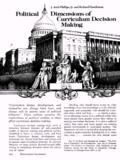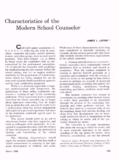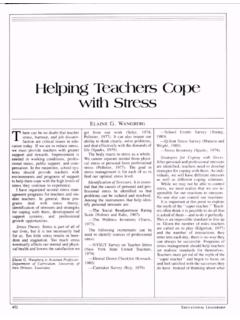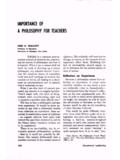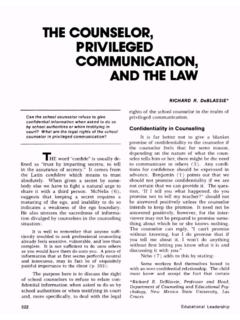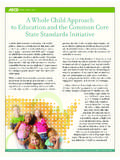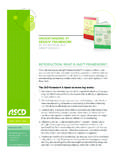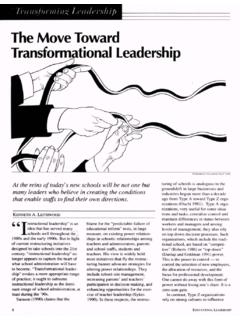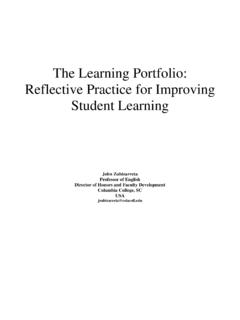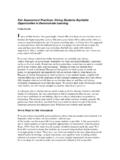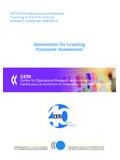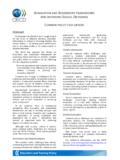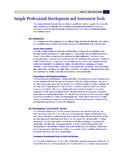Transcription of Assessment and Student Success in a - ASCD
1 And Student Success in a Differentiated ClassroomBY CAROL ANN TOMLINSON, TONYA MOON, AND MARCIA B. IMBEAUWHITE PAPERASSESSMENT AND Student Success IN A DIFFERENTIATED CLASSROOMBY CAROL ANN TOMLINSON, TONYA MOON, AND MARCIA B. IMBEAUINTRODUCTIONIt s generally accepted that one mission of schooling is to help learners develop competence and confidence with important knowledge, understanding, and skills designed to help them relate more meaningfully to the world they live in and prepare them to be good stewards of that world. Fundamental to that mission is ensuring that educators have a sound understanding of the roles of curriculum design, Assessment , and instructional planning in Student Success .
2 This paper highlights attributes of quality classroom practice within and among these three areas. It pays particular attention to critical intersections between formative Assessment and instructional planning for teachers who seek to support the Success of a broad range of learners in today s culturally and academically diverse DO Assessment AND INSTRUCTION FIT IN THE BIG PICTURE OF TEACHING AND LEARNING?Quality teaching calls on teachers to understand and plan wisely for five key classroom elements: learning environment, curriculum, Assessment , instruction, and classroom leadership/management.
3 It also calls on teachers to understand the interdependence of those elements in supporting Success for each Student . Weakness in any of these elements diminishes the effectiveness of all of the others. There is no doubt that a teacher s capacity to create a learning environment that is invitational (Hattie, 2009) for each Student is a powerful contributor to Student Success . There is also no doubt that a teacher s capacity to enlist the partnership of students in creating and implementing classroom routines and processes that balance flexibility and predictability is essential. Such a balance is key if the class is to truly think about and understand content rather than merely North Beauregard StreetAlexandria, VA 22311 1714 USA1-703-578-9600 or 1-800-933-2723 2015 by ascd .
4 All rights 31703 North Beauregard Street | Alexandria, VA 22311 1714 USA | 1-703-578-9600 or 1-800-933-2723 | it; it also allows the class to make room for the individual learning differences apparent in most contemporary classrooms (Hattie, 2009; Tomlinson & Imbeau, 2010). It is difficult to overstate the influence for better or worse of these two elements on young people as learners and as human beings. The focus of this paper, however, is on what we might think of as the curriculum- Assessment -instruction connection (CAI connection). The quality of these three elements, separately and collectively, is at the core of teaching s mission.
5 Stated sim-ply, the CAI connection asks teachers to reflect on and respond proactively to three questions: What do my students need to learn in order to be successful in a given segment of learning? (Where do they need to be?) Given what they should know, understand, and be able to do, what do my students know, understand, and do proficiently? (Where are they?) What can I do to maximize the growth of each learner in what they need to know, understand, and be able to do for Success ? (What am I going to do to move them forward?)The first of the three questions relates to curriculum. The second relates to formative Assessment .
6 The third relates to instruction. Curricular goals inform formative Assessment ; formative assess-ment derives from curricular goals and informs instructional plan-ning, which, in turn, stems from clear curricular goals. This is the CAI connection, and it characterizes the kind of purposeful think-ing and planning that propels Student learning all truly effective teaching requires consistent and careful attention to the five classroom elements (environment, curriculum, Assessment , instruction, and classroom leadership/management) and how they interrelate, the ascd model of differentiation includes all five.
7 Most specifically, however, differentiation responds to the third of the three questions noted above: what can I do to move my students forward?Since the three elements in the CAI connection are so tightly interdependent, phrasing the question as follows more accurately reflects their reciprocal nature: based on what I learn from formative Assessment about where my students currently are in relation to our key goals, what teaching and learning plans will best help each of them move forward?This is the logic and common sense of teaching. Without clear and powerful learning tar-gets, our purpose is murky at best.
8 In addition, in the absence of clear and specific learning goals that are evident to students , assessments become a guessing game, and students feel Page 41703 North Beauregard Street | Alexandria, VA 22311 1714 USA | 1-703-578-9600 or 1-800-933-2723 | by the ambiguity. Further, ill-focused assessments fall short of providing teachers with actionable information. Instruction just moves ahead according to plan with little or no regard for learner ARE THE ATTRIBUTES OF A CURRICULUM THAT SUPPORTS Student Success ?Curriculum is the teacher s invitation to young people to embrace a life of learning and thought.
9 That s a tall order but we ask students to spend the better part of their first two decades of life trying to master that curriculum. What we ask them to learn should be worthy of that time and effort. It should affirm their capacity as learners and should commend learning as one of the most worthy of human best understanding of how people learn indicates that what we teach (curriculum) should have the attributes noted in Figure 1 (Erickson, 2007; National Research Council, 1999; Sousa & Tomlinson, 2011; Wiggins & McTighe, 2005).Figure 1: Attributes of Quality CurriculumAttributes of Quality CurriculumBrief ExplanationPlanned for Student engagementDesigned to capture the minds of learn-ers, to evoke curiosity, and to build on their natural desire to learnHigh relevance to studentClearly relates to students own lives and experiencesFocused on understandingStresses need for students to understand what they learn so they can use and trans-fer it rather than only trying to commit it to memoryEmphasis on sense makingStresses students as thinkers, problem solvers.
10 And meaning makers rather than mere absorbersConnective and integrativeHelps students grasp how the disciplines work and how they help us make sense of the world; shows students links between the disciplines and between what they learn and their livesDevelopmentally appropriateMakes sense for each Student s stage of growth neurologically, psychologically, and sociallyClearly articulated learning goalsBoth teacher and students are clear on what students should know, understand, and be able to do (KUDs) as a result of any segment of learningPage 51703 North Beauregard Street | Alexandria, VA 22311 1714 USA | 1-703-578-9600 or 1-800-933-2723 | characteristics are important primarily because they maximize Student learning.
